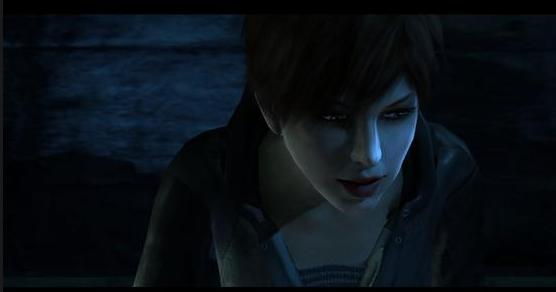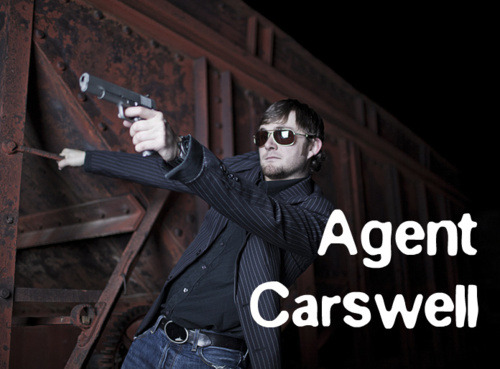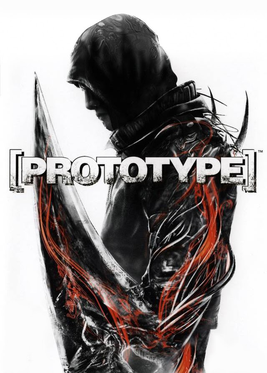 So my last campaign never really caught fire. I didn't have a clear picture of the setting and didn't really know where the game was going to go. I did a mini-campaign of Marvel Heroic Roleplaying, which was a disaster in some interpersonal ways (though it accomplished what I selfishly needed - to learn the system well enough to write for it (woot)), and then we took two months off because we were missing some players and I needed a break. In that time, I put together a new campaign, then we sat down and made characters for it.
So my last campaign never really caught fire. I didn't have a clear picture of the setting and didn't really know where the game was going to go. I did a mini-campaign of Marvel Heroic Roleplaying, which was a disaster in some interpersonal ways (though it accomplished what I selfishly needed - to learn the system well enough to write for it (woot)), and then we took two months off because we were missing some players and I needed a break. In that time, I put together a new campaign, then we sat down and made characters for it.
It's interesting what my group picks up on. Everyone was excited by the Avengers movie this summer, and I felt it was exactly the sort of entertainment I wanted an action game to have as the center. Yet when I tried to push them to think of their characters' backstories as "origin movies", complete with a change to their character and internal and external difficulties that were faced, the reactions ranged from meh to resistant. "Let's just do that in the game." said one. The problem with that approach is that we needed to have stronger character connections to keep the team together, and that only really happens with strong characterization. My group is very creative and is "up for anything", any crazy idea Jason has, they're willing to jump in on, but it didn't really catch fire the way I hoped it would.
In order to get the game on track quickly without overwhelming them with re-learning the system in a dire situation, I used one of the villain teams from Champions Villains Vol. 2: Villain Teams. The Brain Trust.
The Brain Trust is created by a brain in a jar, consists of a giant gorilla, a cat-girl, a ninja and a zombie. We literally are talking about every possible cliché that could exist in a comic book. And the nice thing about the Brain Trust is that they can be anything from serious dangers to, as I used them, slightly offbeat weirdos.
Champions has been a game I've never really enjoyed. Calculating the exact amount that a superhero can lift has always seemed pointless to a long-time comics fan who knows that everything about a character can only last until the next artist and writer and editor. (This is also why I don't mind superhero movie reboots/reimaginings and think the worst thing about comics is a slavish adherence to the "continuous story that lasts literally forever" model.) However, with thirty years of development behind it, Champions has created a world that's exceptionally thorough and has an enormous amount of creativity. One of the greatest superhero supplements of all time, San Angelo, began life as a Champions supplement. (Though its current version is much more, and will be the subject of a future tongue bath, I MEAN REVIEW, from me.) Many other exceptionally good materials have been produced for this line over the years, and even if, like me, the whole concept of sitting down and writing not just a Champions character, but a whole Champions campaign, fills you with dread, it has some amazing stuff.
Villains Vol. 2 contains upwards of 300 individual villains, but also goes into their team resources, goals, gives a few example capers, and details their often tangled internal politics. (But don't ask me to explain why Mind Slayer dresses like that.)
I've had a good time with Champions Online too, a MMORPG that's been free-to-play for a few years now. It certainly made me smile when I mind-blasted some characters that I recognized from the books.
The opening scenario was a bank robbery that threatened to turn bad, as Ape-Plus and his mini-gun were in the main lobby with most of the hostages. Fortunately they had not counted on the forces of CHIMERA arriving to save the day. I made it easy and straightfoward, and only threw in a couple of twists at the end.
Hero Games' electronic offerings are expensive, but to be honest, I feel they're of a quality that might very well justify it. They're all searchable, indexed, bookmarked, and exceptionally thorough.
And here's some Milestones related to the Brain Trust that you might use in your game!
1 XP - When you battle, investigate or otherwise oppose the Brain Trust.
3 XP - When you wreck one of the Overbrain's laboratories or significantly drain them of important resources, including ending some of the more catastrophic plans.
10 XP - When you break up the Brain Trust team by breaking the loyalty of an underling, taking that loyalty for yourself, or turn one of the Overbrain's technologies into a new consumer good.
Unlockables:
5 XP - Overbrain's previous personality comes to the fore and provides you with some assistance in trying to defeat his own plans.
5 XP - Lynx's conscience causes her to struggle with her genetic loyalty, giving her the complication Chemically Uncertain at d8 for any Action Scene of your choice.
5 XP - The animal (or undead) side of various members of the Brain Trust begin to come to the fore. This causes them to go off-plan and attaches the It's A Zoo In Here! Scene Distinction to the chaotic scene.
5 XP - A member of Lynx's family begins to suspect what happened to her and comes forward with the information.
5 XP - Mr. Zombie's family recognizes him from TV and comes forward.
10 XP - Mr. Zombie turns on the Overbrain after his investigation into his life is put off one too many times.




 So my last campaign never really caught fire. I didn't have a clear picture of the setting and didn't really know where the game was going to go. I did a mini-campaign of Marvel Heroic Roleplaying, which was a disaster in some interpersonal ways (though it accomplished what I selfishly needed - to learn the system well enough to write for it (woot)), and then we took two months off because we were missing some players and I needed a break. In that time, I put together a new campaign, then we sat down and made characters for it.
So my last campaign never really caught fire. I didn't have a clear picture of the setting and didn't really know where the game was going to go. I did a mini-campaign of Marvel Heroic Roleplaying, which was a disaster in some interpersonal ways (though it accomplished what I selfishly needed - to learn the system well enough to write for it (woot)), and then we took two months off because we were missing some players and I needed a break. In that time, I put together a new campaign, then we sat down and made characters for it.




 (You can read
(You can read 


 The Mutants and Masterminds Threat Report series from
The Mutants and Masterminds Threat Report series from 

